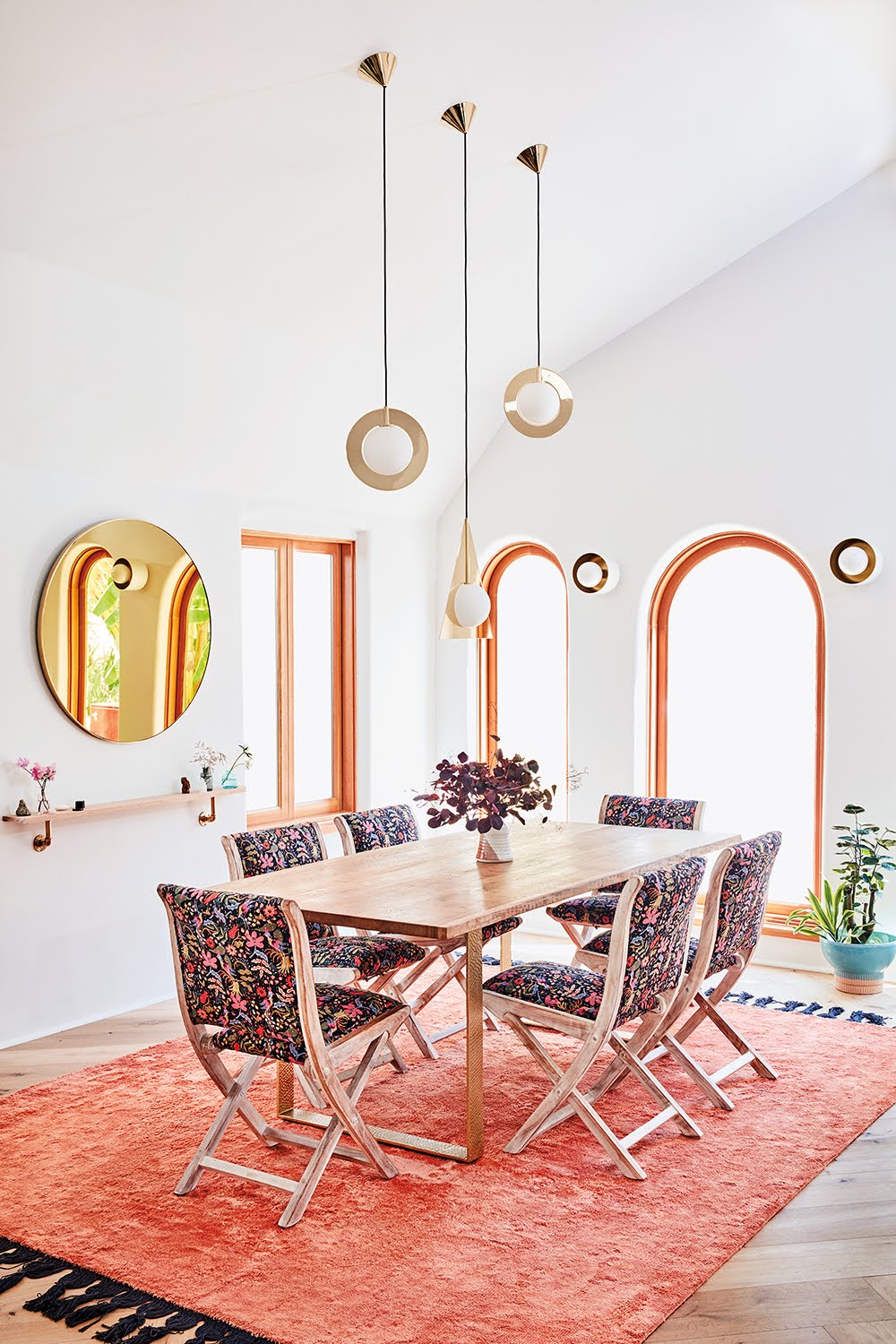We may earn revenue from the products available on this page and participate in affiliate programs.
Despite all the hours we spend watching design shows, scrolling through inspo-worthy Instagram accounts, and pinning rooms on Pinterest, we’re not professional interior designers. We still make decorating mistakes, and lots of them. And honestly, that’s to be expected: Designing a space on your own is daunting.
In an effort to avoid some of the most common rookie blunders, we polled a few trusted designers for their expert advice. All in all, we found comfort in their words of wisdom. “Even for a designer, the entire process is a labor of love,” says interior and textile designer Caitlin Wilson. “It takes time and layers and strategic solutions, but it can be done—even if you’re on a budget.”
Peep their dos and don’ts below.
Do: Take Inventory

Take it from designer Jacquelyn Clark: Establish a solid game plan from the start. “It can be all too easy to dive in and start buying things willy-nilly when you begin decorating your first place, but taking inventory of what you have, what you need, and what you want is a great place to begin planning,” says Clark.
Are you starting from scratch? Just looking to freshen things up? Do you have a budget you’re trying to stay within? Certain pieces you’re aiming to design around? These are the questions to ask yourself before you whip out your wallet.
Don’t: Buy Anything Without Measuring

Scale is everything. “Buying a piece of furniture or a rug that’s too large or too small can throw the look of a room off,” says designer and blogger Katrina Blair Sullivan.
Heather Bullard suggests measuring and laying out your rooms and furnishings in advance, specifically by using an augmented reality app like IKEA Place or drawing a general footprint on grid paper. The most important thing is that everything fits. When you head to the store, make sure you’ve got a tape measure in your bag and the rooms’ dimensions on hand.
Do: Have Someone Hold You Accountable to Your Budget

It’s easy to get wrapped up in the excitement of a new design project, but don’t forget to create a realistic budget—and stick to it. If you’ve already set aside a specific amount or scheduled automatic savings so that you can afford a splurge or two, share that number with a close friend or significant other. When a $900 vintage dresser starts to look really good, ping them for a polite reality check. Do I really need this? If the answer is no, go back to the drawing board. There are plenty of affordable places to shop for home decor—even midrange shops that aren’t IKEA. When you make a conscious effort to stay within your means, you’re that much less likely to have buyer’s remorse.
Don’t: Buy Everything From the Same Place

Just because CB2 is having a living room sale doesn’t mean you need one of everything. Rushing through a redesign often results in your home looking more like a showroom. Instead, take your time and find the pieces that really speak to you. Amber Lewis believes some of the best finds are discovered when you’re not looking for them. “Trust me, this is a process that takes time. I truly scour every inch of the planet to find the right pieces for my clients. Patience is key!” she says.
“Trying to decorate a space before living in it for a while can be costly and frustrating,” adds Shavonda Gardner of SG Style. “Once you get a feel for the space and how you use it and how you need it to work for you, then start investing in decorating it. That way you make intentional purchases that will be long-lasting.”
Do: Mix and Match

“Furniture, pillows, or art doesn’t have to match,” says Stephanie Watkins of CasaWatkins. “Mixing items can grant you longer usage since old items can coordinate with newer pieces.”
When in doubt, pair complementary colors or similar motifs. The unifying factor can be as simple as an undertone of cool blues. If you’re still struggling to find the right balance, keep it subtle. “Some people often go very bold with color when trying to make a change,” says Joy Cho of Oh Joy! “Whereas instead, they should look to wall colors that will complement, but not overwhelm, the room and bring in additional color through accessories.”
Don’t: Sit on the DIYs in Your Saved Folder

Want to paint half of your front door pink or grow a garden in the kitchen? Go for it. “I think first-time decorators play it too safe,” says Sarah Wittenbraker. “Don’t be afraid to make a statement. Dip your toe by selecting a bold paint color. It’s easy to change and instantly gives the room a dramatic vibe.”
This story was originally published on August 11, 2018. It has been updated with new information.
Get more helpful tips from the design pros: 8 Design Questions You’ve Always Wanted to Ask, Answered Designers Dish on Their First Apartment Must-Haves 9 Trends Designers Are Secretly Craving Right Now
